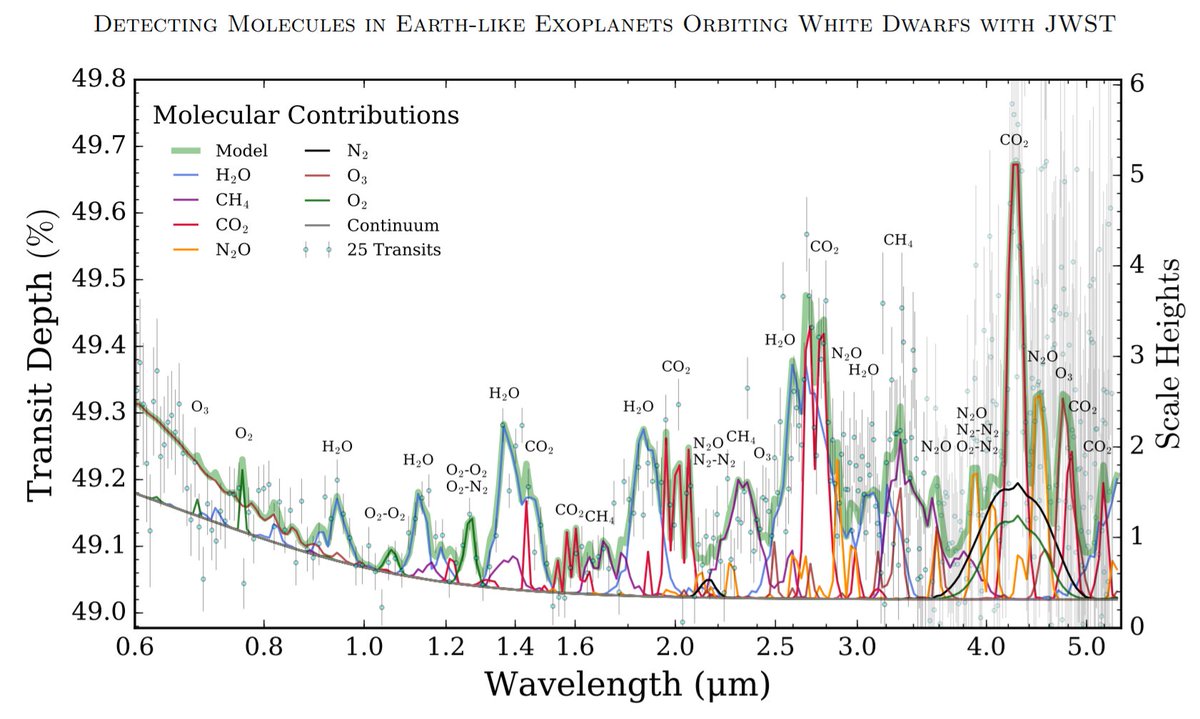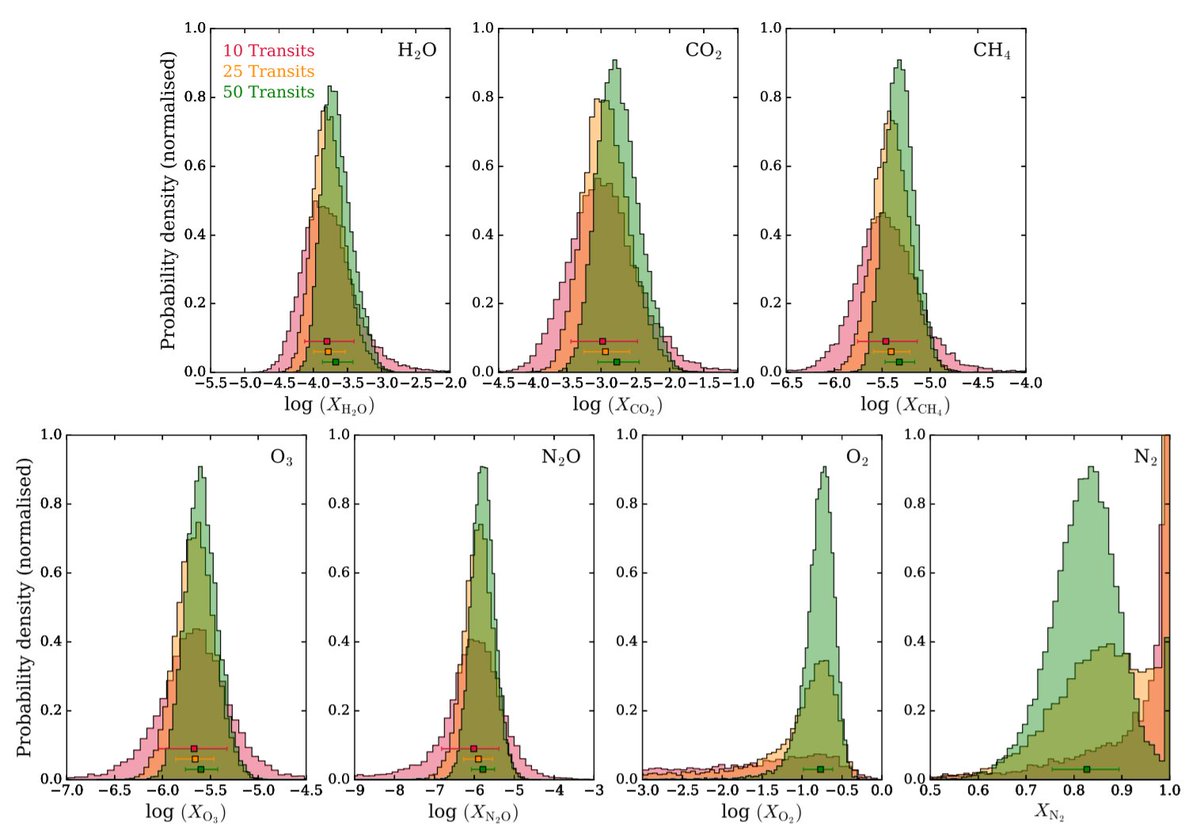Could we detect alien life on a planet orbiting a dead star?
@nasa& #39;s announcement today of the 1st transiting planet around a white dwarf could have major implications for the search for life on exoplanets.
THREAD
#WhiteDwarfPlanet #astronomy #exoplanets
First up: if you haven& #39;t heard about Andrew Vanderburg& #39;s discovery of WD 1856b, here& #39;s a great summary by @NASAGoddard: https://youtu.be/fDhG0ppvQ2g ">https://youtu.be/fDhG0ppvQ...
Today& #39;s discovery demonstrates that giant planets can survive close-in orbits around white dwarfs.
So could rocky planets also survive, potentially offering a home for life after a star& #39;s demise?
The odds just went up.
So could rocky planets also survive, potentially offering a home for life after a star& #39;s demise?
The odds just went up.
But why should we care about rocky planets around white dwarfs?
The smaller the star, the greater the fraction of light absorbed by the planet& #39;s atmosphere.
So rocky planets transiting white dwarfs should be *amazing* for transmission spectroscopy.
The smaller the star, the greater the fraction of light absorbed by the planet& #39;s atmosphere.
So rocky planets transiting white dwarfs should be *amazing* for transmission spectroscopy.
So we started wondering what @NASAWebb would see if it observed transits of Earth-like planets around white dwarfs.
What molecules can JWST detect and how many transits are needed?
What molecules can JWST detect and how many transits are needed?
Our paper, & #39;The White Dwarf Opportunity& #39; - just published in ApJL - provides an answer.
http://doi.org/10.3847/2041-8213/aba9d3
(coming">https://doi.org/10.3847/2... to arXiv tonight)
Shoutout to my co-lead @KalteneggerLisa, was great working with you on this!
http://doi.org/10.3847/2041-8213/aba9d3
(coming">https://doi.org/10.3847/2... to arXiv tonight)
Shoutout to my co-lead @KalteneggerLisa, was great working with you on this!
We produced transmission spectra and simulated JWST observations from atmospheric models of white dwarf planets (by dead star aficionado @theakozakis!)
We then conducted a detailed atmospheric retrieval analysis.
The results blew us away.
We then conducted a detailed atmospheric retrieval analysis.
The results blew us away.
Confidently detecting molecules in Earth-like planet atmospheres around white dwarfs is a breeze with @NASAWebb.
E.g. the O3 + CH4 biosignature to > 5 sigma in just 25 transits (10 hour period).
So a ~2 week JWST campaign is all it would take to search for biosignatures.
E.g. the O3 + CH4 biosignature to > 5 sigma in just 25 transits (10 hour period).
So a ~2 week JWST campaign is all it would take to search for biosignatures.
Amazingly, you can even detect O2 and N2 with low-res NIRSpec Prism data (via collisional pairs).
You can also precisely constrain the atmospheric composition.
You can also precisely constrain the atmospheric composition.
Just one catch: we need to find a rocky planet transiting a white dwarf to realise the opportunity.
But with ~4,700 white dwarfs within 200 light years, there are many chances to find one.
@NASA_TESS& #39;s new 30s cadence mode will be key to this search.
(2 min transit duration)
But with ~4,700 white dwarfs within 200 light years, there are many chances to find one.
@NASA_TESS& #39;s new 30s cadence mode will be key to this search.
(2 min transit duration)
If the search succeeds, our first chance to examine rocky exoplanet atmospheres in exquisite detail could give us a glimpse into our own far future.
Perhaps the first signs of life beyond the solar system could come from a planet orbiting a long-dead star...
Perhaps the first signs of life beyond the solar system could come from a planet orbiting a long-dead star...
Finally, a special shoutout to Jack Madden ( @Astro_Madden) for making the incredible visuals of a rocky planet around a white dwarf.

 Read on Twitter
Read on Twitter







